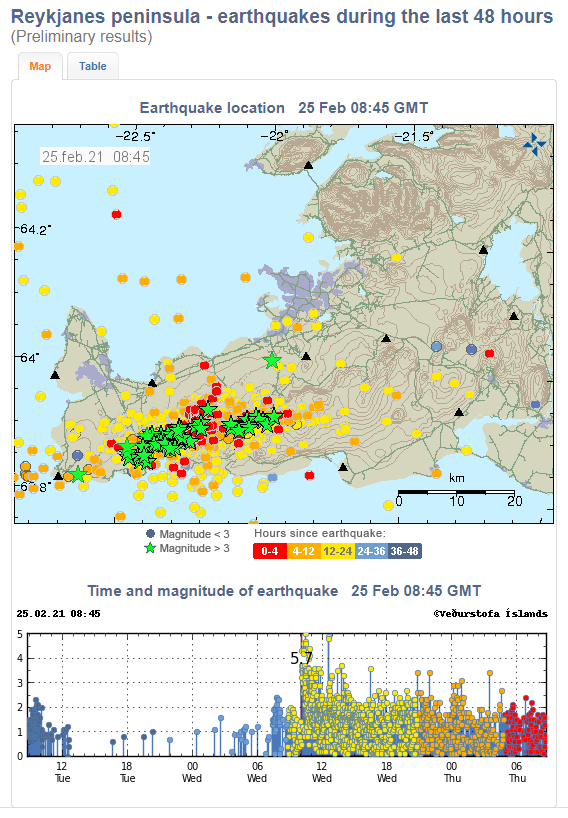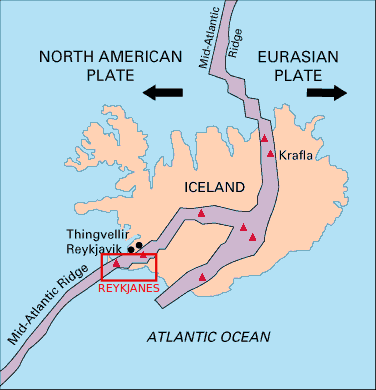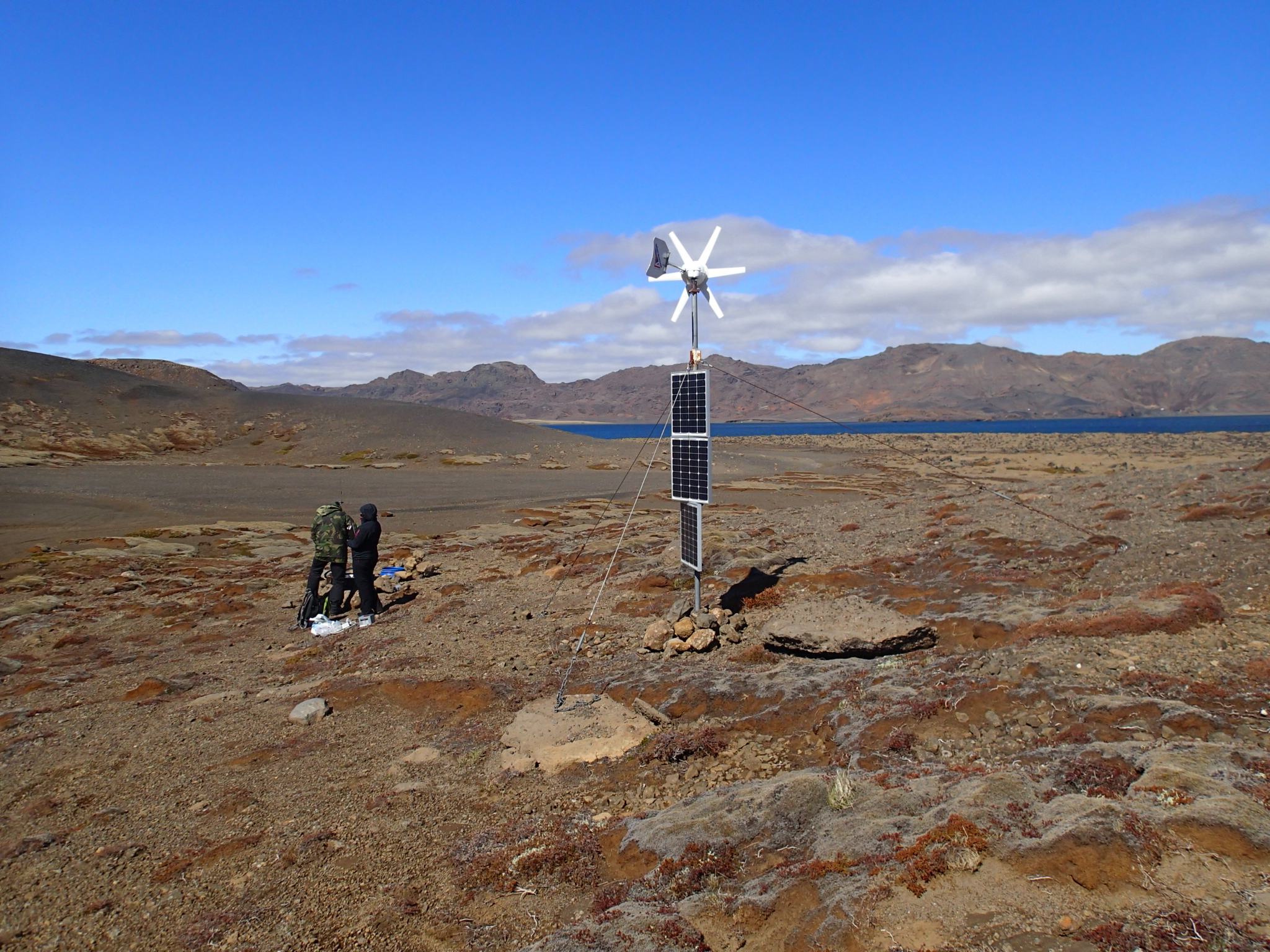On Wednesday 24th February at 10:05 UTC the Reykjanes Peninsula (south-west Iceland) was hit by moderate earthquake of magnitude 5.7 (according to Icelandic Met Office – IMO) accompanied by a series of hundreds to thousands weaker earthquakes. Nine earthquakes were stronger then magnitude 4, another 45 earthquakes exceeded magnitude 3. The main quake has been widely felt in Reykjavík and the typical thunder sound has been wittnessed. The activity is ongoing.

Fig. 1 – The IMO website informs about the actual seismic activity. Upper plot is a map view of localized earthquake foci (green stars mark event with magnitude higher than 3).
Iceland is one of the most significant geodynamic regions of the world. This is a unique place on Earth where the Mid-Atlantic ridge, that forms boundary between the North-American and Eurasian tectonic plate, rises above the sea level. Weak earthquakes up to magnitude 3 dominate the Reykjanes seismic activity occurring every day, but even stronger earthquake swarms may occurr, like the one of Wednesday 24th February.

Fig. 2 – Sketch of tectonics around Iceland and Reykjanes Peninsula (adapted from the website U.S. Geological Survey)
The Institute of Geophysics operates a network of local seismic stations on Reykjanes penisula – the REYKJANET network – since 2013. This year a new grant project “Natural Seismicity as a Prospecting and Monitoring tool for geothermal energy extraction” has been launched in cooperation with Iceland Geosurvey, Institute of Rock Structure and Mechanics CAS and the Charles University Faculty of Science. The main goal of the project is to evaluate geothermal energy sources on Iceland using a non-invasive method utilizing microseismicity. The ongoing seismic activity accompanied by huge amount of weak seismic events enables to get valuable information for our study.

Fig. 3. – Station KLV of the REYKJANET network near the Kleifarvatn Lake during the regular service
According to IMO, more strong earthquakes must be expected but the activity does not seem to be related to volcanic activity. Nevertheless, the gas monitoring will be performed to monitor the excessive gas emanation that may accompany such an earthquake activity. IMO also suggest avoiding steep slopes, because lanslides and rock falls are expected.
Actual seismic activity of Reykjanes can be found at the websites of Icelandic Met Office.
Authors: Jana Doubravová, Josef Horálek, Jakub Klicpera

